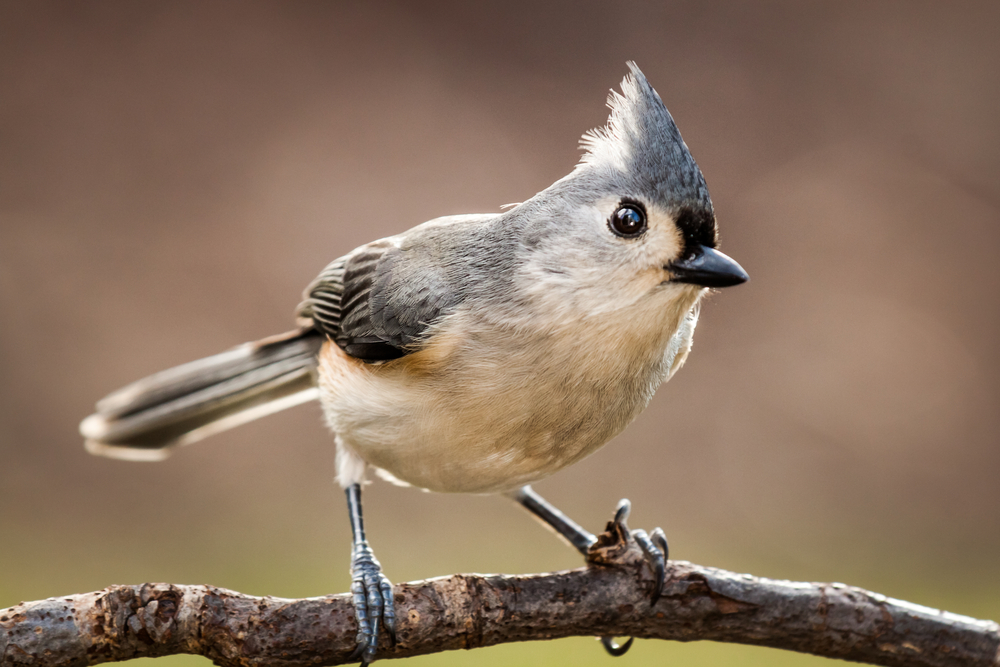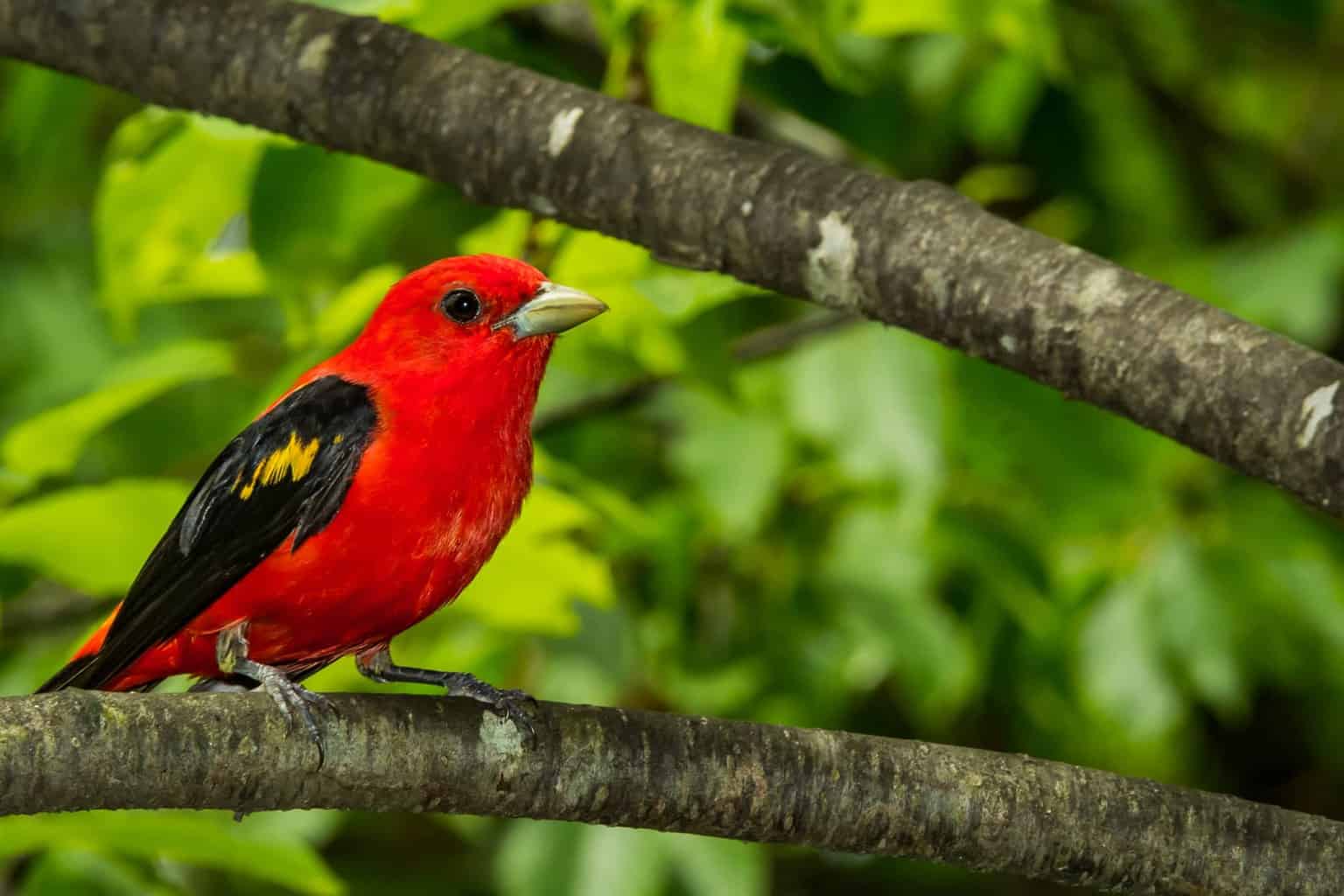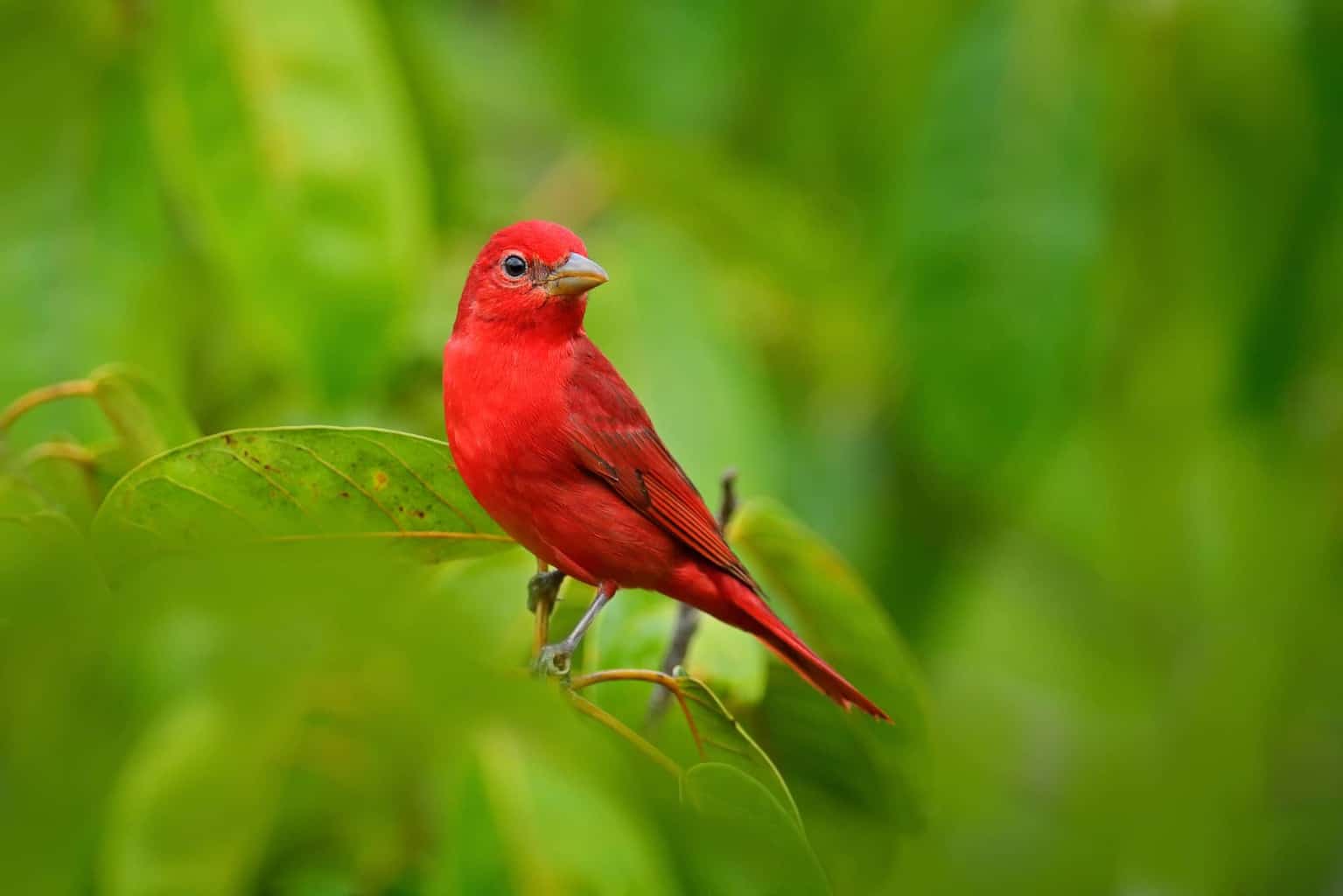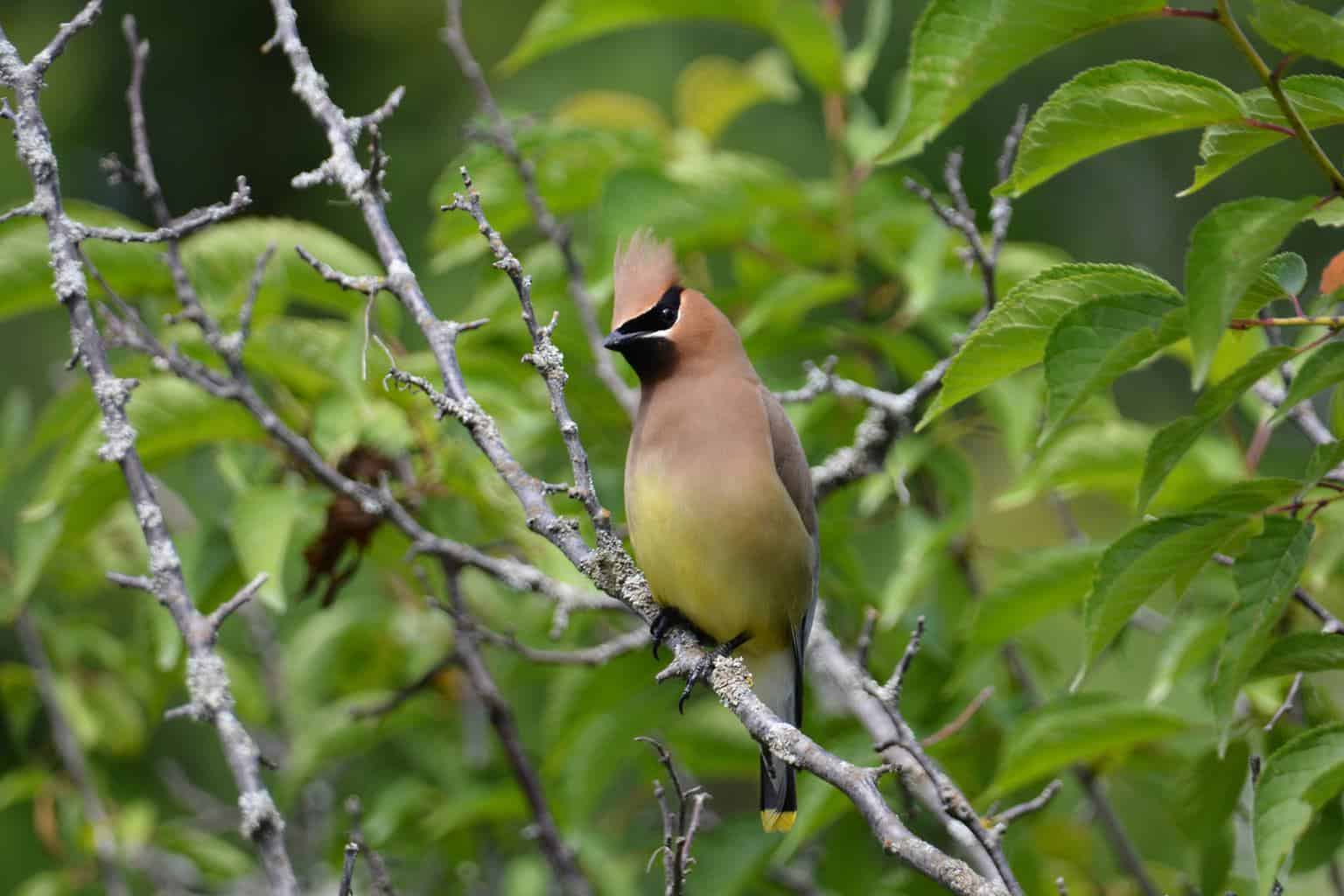Have you ever gotten excited about spotting a cardinal in the distance…only to realize that it’s a different bird altogether?
Even though cardinals are recognizable in pictures, art, and home décor, it’s an easy mistake to mix them up with other birds in nature! Several species look like cardinals and can confuse birders.
We may be passionate birdwatchers at WildBirdScoop, but we can still mix up our birds. To help you avoid this, I have a few quick tips below — then you can dive into a detailed list of similar-looking species.
- Cardinal kin and their tricky mimics: This list will help you recognize the difference between the three types of cardinalis genus and other similar species. For example, the bill shape in pyrrhuloxias and the crest in tufted titmice are bold identifiers.
- Colorful confusion: Remember that birds with red coloration, like scarlet tanagers and summer tanagers, are easily confused with cardinals. However, their wing color and body shape will help you tell them apart.
- Regional birdwatching: Regional species like the phainopepla (dubbed “goth cardinals”) or the alluring vermilion flycatcher, which shares its habitat with the northern cardinal only along the southern Texas border, highlight the diversity and specificity of bird habitats.
Are There Different Kinds of Cardinals?
When people think of cardinals, they usually think of northern cardinals. Males are dark red with a flashy, recognizable crest atop their heads.
Females are pale in color with the same crest as males, but both sexes have a pointy orange beak. Another interesting tidbit: both sexes sing! While female songbirds don’t usually sing, female cardinals sing while they sit on their nests.
There are only three types of cardinalis: the northern cardinal, the pyrrhuloxia, and the vermillion cardinal.
Northern cardinals are part of the cardinalis genus and the cardinalidae family.
The cardinalidae family includes cardinals, grosbeaks, and buntings. They tend to be medium or large and somewhat bulky or stout in their build.
Are All Cardinals Red?
There are plenty of red birds that aren’t cardinals. Some cardinals aren’t even red!
For example, female northern cardinals are pale brown with slight red tinges on their feathers and crests.
Pyrrhuloxias are part of the cardinalis genus but only have red on their breast and crest, not the rest of their bodies.
What Other Birds Look Like Cardinals?
There are quite a few birds that look like cardinals! Let’s look at some birds that look like cardinals in color, shape, or size.
This should help you become faster and more adept at differentiating between cardinals and other songbirds.
Pyrrhuloxia: A Familiar Crest But a Different Beak

Pyrrhuloxias are also called desert cardinals. Their main coloring is gray or gray-brown, but they have bright red breasts and crests.
Males also have a red face, while females have less red coloration than males. Their bills are yellow and their wings have small amounts of red here and there.
Pyrrhuloxias get their name from a combination of pyrrhula and loxia. Pyrrhulas are bullfinches and loxias are crossbills.
Pyrrhuloxias are not a combination of these two birds but have traits reminiscent of each! One way to differentiate a pyrrhuloxia from a cardinal is that the phyrrhuloxia has what is described as a crooked bill.
The bill is thick and rounded, and the opening does not make a relatively straight line from beak to head like a cardinal’s bill does.
Tufted Titmouse: A Crested Bird With a Different Color

Tufted titmice are tiny birds whose color differs from a male cardinal. However, from a distance, the crest on their head can make them look a female.
Tufted titmice are gray and white. They have rusty or peach coloration down their sides. Because they have a small black patch above their bill, they have been described as “snub-nosed.”
These little birds are found year-round throughout the eastern half of the United States.
One fascinating thing about these little birds is that males and females have the same coloration!
Scarlet Tanager: Another Gorgeous Red Bird, but With Dark-Colored Wings

Scarlet tanagers are absolutely stunning. When you see a male in summer, his bright and flashy red body stands out among the greenery.
His back wings and tail are black. Females, on the other hand, have olive-yellow bodies.
Their tails and wings are not dark black but much darker green than the rest of their bodies.
After the breeding season, males molt and lose their bright red plumage. They look more like females for the rest of the year.
The best way to differentiate between a male and female scarlet tanager during most of the year is to look at their wings. Males’ wings are much darker.
Scarlet tanagers don’t look much like cardinals when you get a good look, but if all you see is that bright flash of red, it is easy to mistake one for a northern cardinal.
Vermilion Flycatcher: Crested Orange Bird With a Cute Mask

This is another stunning little bird! Vermilion flycatchers are similar in size to northern cardinals and have a small crest.
Males have deep, orange-red feathers on their bodies and a “mask” that runs from their faces, along their eyes, and to the backs of their heads.
Females, though, are grayish-brown. They do have some reddish coloration on their underbellies.
They are easier to mix up with a scarlet tanager than a northern cardinal. You’re also very unlikely to see them in the same region as northern cardinals because vermilion flycatchers only live in Mexico and along the southern border of Texas.
Summer Tanager: All Red, but a Different Shape

Summer tanagers are the only bird in North America that is truly all red. Northern cardinals come close, though!
Male summer tanagers are bright red. Females are mustard-yellow. They are beloved for their habit of feasting on flying, stinging insects like bees and wasps.
They have a completely different shape than the northern cardinal, which is stocky and crested.
The summer tanager is large, like a cardinal, but sleeker in shape. It may have a slight crest on its head, but nothing pronounced like the cardinal.
Phainopepla: Same Shape, but Dark Black in Color

Phainopeplas have completely different coloration than cardinals, but their shape and size are almost identical.
They have a stocky body and pronounced crest. Their beak is black and pointed instead of yellow and cone-shaped.
Phainopeplas spend the breeding season in central and Baja, Mexico, southern California, and parts of Nevada, Utah, New Mexico, Arizona, and Texas.
The phainopepla is beloved for its interesting look and its fascinating behaviors. Males are dark black, and females are grayish brown.
They are sometimes called “goth cardinals” because they look like cardinals wearing all black!
Some of their interesting behaviors include:
- Eating up to 1,100 mistletoe berries per day
- Mimicking the calls of other birds, including the much larger red-tailed hawks
- Nesting and laying eggs twice a year in two different locations; first in the deserts of the Southwestern U.S. and Mexico, and then in the forests of California
Red Crossbill: Light Red With a Distinct Bill Shape

Red crossbills are mostly found in Canada and the western half of the U.S. Males are a light, brick-reddish color, and females are a combination of brownish-yellow, brown, or olive-brown.
At a glance, the reddish-brown color of the male can look like a female cardinal. However, both sexes of red crossbills lack crests, and their body shape is less stocky.
The red crossbill’s most interesting feature is its name: it has a crooked bill that crisscrosses when it is closed!
The bill is shaped this way so the red crossbill can break open conifers, as conifer seeds are their main diet.
I confuse the red crossbill much more frequently with the two-barred crossbill (also known as the white-winged crossbill).
Cedar Waxwing: Crested and Masked, but Not Red

Cedar waxwings are really cool looking! They have complex coloring, with a light brown head that slowly transitions to pretty gray wings.
On their undersides, they are pale yellow. Their tails have a bright yellow tip on the end, their wings are tipped in red, and they also have a thin black mask around their eyes.
The white outline around their mask adds just a bit more to their interesting appearance! Males and females look more or less the same, although males have slightly darker chins.
The similarity to cardinals is mostly limited to their silhouette.
Pine Grosbeak: Pink With No Crest

Pine grosbeaks are North America’s largest finches and one of the largest finches in the world.
Their pinkish-red color sometimes confuses them with northern cardinals, especially if they are only spotted from a distance or at a glance.
The differences between a pine grosbeak and a cardinal include the following:
- Beak color: pine grosbeaks have a charcoal-colored beak instead of an orange beak
- Tail length: cardinals have much longer tails
- Color pattern: pine grosbeak males have black wings, whereas cardinals are all red
- Geography: pine grosbeaks can be found throughout Russia, Scandinavia, and Canada
Red-Crested Cardinal: A Familiar Head but a Different Body

Red-crested cardinals are not, in fact, part of the Cardinalis genus or even the Cardinalidae family. Rather, they are a variety of thrushes.
It almost looks like someone designed a bird to have the head of a northern cardinal and the body of a white and black tanager.
They even have the same cone-shaped bill as a northern cardinal!
Female red-crested cardinals have the same color patterns as males, but their heads are light brown instead of red.
They can only be found in South America, so there is no overlap between northern and red-crested cardinals’ territories.
Vermilion Cardinal: South American Bird With a Skinnier Crest
The vermilion cardinal is perhaps the very closest in appearance to the northern cardinal. Males are bright red with the same long tails as the northern cardinal.
They have a pronounced crest, but it is thinner and spikier. It’s quite dramatic!
Females are brown with gray heads.
These birds live exclusively in Venezuela and a tiny piece of Colombia, so you will never be somewhere that requires you to differentiate between the two of them in the wild.
Crested Ant Tanager: Another South American Red Crested Bird
Red-crested ant tanagers are similar to red-crowned ant tanagers, but they have a crest instead of just the top of their head being darker red.
They live exclusively in Colombia, and most birders will never get to see one in the wild.
The crest is a bright scarlet color, while the rest of the bird ranges from brick red to a reddish-brown. Females have a similar-shaped crest that is not quite as vibrant.
Their name comes from the fact that their diet is mostly ants and other insects. They have even been observed “stalking” swarms of army ants, ready to get their fill of these nutrient-rich insects.
FAQ About Some Cardinal Look-a-likes!
Still, have questions? We have some answers!
What Bird Looks Like a Cardinal but Isn’t Red?
If you’re looking for a bird shaped like a cardinal but lacks that characteristically red coloration, you might be looking for a phyrrhuloxia, tufted titmouse, phainoppla, or cedar waxwing.
What Bird Looks Like a Black Cardinal?
No question about it, you’re looking for the all-black phainoppla!
What Bird Is Gray and Looks Like a Cardinal?
You could be looking for a pyrrholoxia, tufted titmouse, or female phainoppla.
What Bird Looks Like a Brown Cardinal?
Pyrrhuloxia has brown bodies with red, crested heads.
What Bird Looks Like a Cardinal Without the Crest?
Several red birds don’t have crested heads. You could be looking for the scarlet tanager, summer tanager, red crossbill, or pine grosbeak.
What Bird Sounds Like a Cardinal?
You’re not alone if you’ve noticed the pyrrhuloxia popping up repeatedly in this article! Pyrrhuloxias are probably one of the easiest birds to mix up with a northern cardinal.
They even have a similar song! Their notes are just pitched slightly lower than that of a cardinal.

